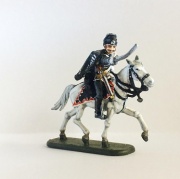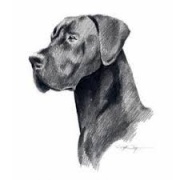Yesterday I have seen the movie "Danger Close, The battle of long tan", and I saw that not one of the infantry guys wore a helmet in combat. They all had a round field cap on their head.
Now is my question, is this historical correct?
Questions
Anzac uniforms Vietnam war 1966
8 posts
• Page 1 of 1
-

Peter
 Moderator
Moderator- Posts: 22750
- Member since:
25 Mar 2008, 18:51
These are the reasons why all army`s around the world since the 20th century never choose a helmet in combat:
A helmet is heavy, shiny in the rain. It is hot under it during you wear it.
If you drop it from a mountain it can break.
Tests with field cap came to the result that they do not break. Are much lighter as a helmet.
A bit cooler during you wear it. Much more easier to transport (You can roll it to a small tube).
If a projectile pass it in and on the other end out is easy to repair, with needle and strand.
Peter wrote:
... movie ... question, is this historical correct?
Movies are so historical correct like Peter Pan.



Or ... ?
At: 0.38
https://www.youtube.com/watch?v=qMjOCwC1o6g
A helmet is heavy, shiny in the rain. It is hot under it during you wear it.
If you drop it from a mountain it can break.
Tests with field cap came to the result that they do not break. Are much lighter as a helmet.
A bit cooler during you wear it. Much more easier to transport (You can roll it to a small tube).
If a projectile pass it in and on the other end out is easy to repair, with needle and strand.
Peter wrote:
... movie ... question, is this historical correct?
Movies are so historical correct like Peter Pan.
Or ... ?
At: 0.38
https://www.youtube.com/watch?v=qMjOCwC1o6g
-

Wiking
- Posts: 2834
- Member since:
14 Sep 2015, 10:03
Peter wrote:Yesterday I have seen the movie "Danger Close, The battle of long tan", and I saw that not one of the infantry guys wore a helmet in combat. They all had a round field cap on their head.
Now is my question, is this historical correct?
Yes, I have lived in Australia for nearly fifty years and practically every image I've ever seen of Australian troops in Viet Nam shows them wearing the bush hat or bare headed. One exception would be the SAS in their sand coloured beret (still not a helmet). I think bush hats were considered to be more practical while on patrol in the jungle environment. Helmets are hot, noisy, and show a distinctive profile. The giggle hat was designed to be shapeless in order to break up the shape of the head, was cooler to wear, and didn't ring like a bell if it bumped into a bit of the jungle.
In defensive positions Australian troops would be more likely to wear helmets and flack jackets.
Other visual differences between Australian and US troops, The Australians carried more water bottles and, mostly, used the FAL SLR rather than the M16.
"Danger Close" is an excellent movie, I recommend it to anyone who can get hold of a copy. It may seem a bit over the top, a single company holding off an entire NVA battalion, but that is pretty much what happened. And the film does a good job of showing that the Australian troops wouldn't have stood much chance without the support of the Kiwi artillery.
I've seen a documentary in which veterans of the battle were interviewed and the film is a good reflection of their experiences. There's just a couple of scenes that are a bit "Hollywood", but it is a movie, and, actually, I'm not sure if one of them at the end of the battle was based on an account of one of the vets anyway, I'll have to watch the docco again.
-

Graeme
- Posts: 1565
- Member since:
27 Nov 2015, 02:39
-

Bluefalchion
- Posts: 3575
- Member since:
23 Dec 2010, 07:57
For me it was the first time I get informed about the activities of ANZAC troops in Vietnam. Don't know enough about this conflict. Interesting to follow this topic here.
-

MABO
 Supporting Member (Gold)
Supporting Member (Gold) - Posts: 9170
- Member since:
12 May 2008, 18:01
-

Susofrick
 Supporting Member (Gold)
Supporting Member (Gold) - Posts: 7713
- Member since:
19 Feb 2008, 12:10
Help keep the forum online!
or become a supporting member
Thank you for this information Graeme. At the end of the movie they show some real images from after the battle. They show also a picture of the actor and the real person besides eachother.
As I see this I think helmets would have saved some lives, and would have been a good protection agains their own artillery, because they had to drop their bombs very close to the defending line.
And it was also the first time for me that I heard that ANZAC troops were involved in this battle. I must do some more research on this.
For those who want to see this movie, it isn't bad. It reminded me on the movie "We were soldiers".
PS: I didn't like the steel helmet neither. In fact you wore two helmets. Under that steel one there was a plastic helmet. The kevlar ones were better an lighter. Same for the shard vest.
As I see this I think helmets would have saved some lives, and would have been a good protection agains their own artillery, because they had to drop their bombs very close to the defending line.
And it was also the first time for me that I heard that ANZAC troops were involved in this battle. I must do some more research on this.
For those who want to see this movie, it isn't bad. It reminded me on the movie "We were soldiers".
PS: I didn't like the steel helmet neither. In fact you wore two helmets. Under that steel one there was a plastic helmet. The kevlar ones were better an lighter. Same for the shard vest.
-

Peter
 Moderator
Moderator- Posts: 22750
- Member since:
25 Mar 2008, 18:51
Former NZ soldier, later British Army...
Never wore a helmet on operations in jungle terrain - too hot - too heavy - gives off a very distinctive silhouette, no difference in a FOB unless under shell fire; almost never in my experience
Just my two cents
Never wore a helmet on operations in jungle terrain - too hot - too heavy - gives off a very distinctive silhouette, no difference in a FOB unless under shell fire; almost never in my experience
Just my two cents
-

Alinmanila
- Posts: 15
- Member since:
30 Nov 2020, 10:29
8 posts
• Page 1 of 1
